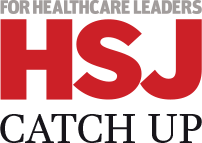Patient data can bring about life changing improvements in care - but too much is left unstructured. Steve Rudland explains how to transform it and reap the benefits

Unstructured patient data, or content that is kept outside an organisation’s core systems and processes, poses a significant challenge to most healthcare providers. Failure to capture and process data swiftly and accurately could strike at the heart of healthcare provision, affecting the ability of medical staff to do their jobs effectively.
Healthcare providers that succeed in assimilating unstructured patient data - from referral letters to test results - into core operations stand to benefit from not only increased efficiency and associated cost savings, but will also see life changing improvements in patient care.
‘Unless medical practitioners have access to all of a patient’s information, they can’t make informed clinical decisions’
Despite the variety of healthcare models that exist around the globe, the challenges of handling unstructured patient data are very similar worldwide. Most countries are still struggling with how best to handle paper records, and they share the same issues around handling data related to referrals, discharge processes and ambulance patient information report forms.
The nature of unstructured content means it often has to be tracked down by staff, with inherent delays, errors, increased costs and even lost records. The issue of paper records is partly addressable by scanning them into an electronic storage system.
Test results, digital medical images, simple correspondence, such as clinic letters and even electronic forms, may be captured electronically and all made accessible in one place in a patient centric enterprise content management solution. However, technology is only part of the answer.
- Supplement: What organisations must do to achieve a paperless NHS
- Be prepared for the ICO’s new powers over patient data
- Sign up to receive the latest innovation news and resources by email
Informing clinical decisions
Even in a mature electronic health record system, about 25 per cent of the information about a patient still lives outside the system.
Yet unless medical practitioners have access to all the information about the patient, they cannot make informed clinical decisions.
If they have to wait for information to be made available, or if they do not even know that it exists, there is a good chance of treatment decisions based on incomplete information presenting an increased risk to the patient.
Where procedural information is held in paper manuals, or where it is difficult to access electronically, the chances of staff not knowing the correct action to take in a given situation are increased, thereby putting patient safety at risk.
If an employee does not know the correct policy or procedure, a trust is likely to find itself in an avoidable situation of liability for poor treatment.
‘Too often providers simply replicate existing processes electronically, and that can be a mistake’
A well designed content management solution can enhance the ability of a patient to provide information. Quite often in the early stages of treatment, patients come into outpatient departments and spend time completing forms that could be made available securely online and completed before the consultation.
This way, the clinician would have the opportunity to review all the information ahead of the consultation with the patient, allowing more time to care.
Healthcare providers that have smooth processes to capture and access all the right data (and do not need to constantly ask patients to repeat information) are improving the patient experience. This increases the likelihood of patients requesting to be referred to a specific trust.
Inefficient data handling also has financial implications. A trust’s ability to provide good quality information to commissioners will ultimately impinge on the reimbursement that the trust receives.
It is no secret that a number of trusts are not receiving the level of reimbursement they are entitled to, since they are unable to provide quality data to their commissioners.
Tackling the issue
The scale of the challenge faced by organisations - from trusts to clinical commissioning groups - in tackling unstructured patient data is clear.
The managers and clinicians charged with sorting out this issue may feel that they have been handed a Sisyphean task, but there are a number of steps they can take to address unstructured data.
These are well established good practice and should result in improved information handling, cost savings and enhanced patient care.
The first step is to identify all the ways information is captured, be it on paper, diagnostic and digital images, and all the different forms that are in use.
Many forms will be duplicated: sometimes people cannot find the right forms, so they fill in a new one. Content audits of healthcare organisations typically uncover a potential reduction in the number of forms in use
through duplication of at least 30 per cent.
‘As soon as you digitise paper, you can start getting useful information out of it’
The key is to understand the nature of the unstructured content each department faces. Talk to the people who work there, carry out an audit, eliminate the duplicates and, only then, decide what information you want to collect.
Too often providers simply replicate existing processes electronically, and that can be a mistake. The aim is not just to automate processes, which may even contain errors that would be exacerbated by speeding up the process, but to take advantage of the opportunity to improve them.
The next step is to stop generating new paper. A realistic aim may be to achieve paper independence - creating a paper-free environment that will also accept paper input, to embrace senior staff who may not yet be willing to adapt to an electronic system.
Paper forms need to become electronic. If paper is coming into a trust from outside, then plan to digitise it at the point of entry, not at the end of the process. As soon as you digitise paper, you are able to start getting useful information out of it.
Reduce physical storage
As resources are squeezed, healthcare providers are looking to reduce the need for physical storage. A strategy to tackle unstructured data can address this issue too.
Physical space is at a premium and by reducing paper storage, trusts can free up valuable space for revenue generating clinical purposes or cost saving - for example, by reducing the need for externally rented storage.
‘A well designed content management solution can help patients provide information’
Either way, there is a strong contribution to the return on investment.
Good practice also suggests that the expected process improvement and cost savings should be benchmarked at the outset and then monitored throughout the process.
Return on investment benchmarks might include:
- revenue generation;
- reputational benefits as the patient experience improves, making it more likely that the commissioners will choose to do business with you;
- more effective use of existing IT investment; and
- cost savings in space and staff time.
In addition, reducing risk and liability will result in a reduction in the level of funding required for this particular purpose.
Transforming unstructured patient data into structured, accessible patient information is a challenge facing most healthcare providers. Those that rise to the challenge will reap the rewards of better patient care and lower costs.
Steve Rudland is healthcare practice manager (EMEA) of Hyland



























No comments yet